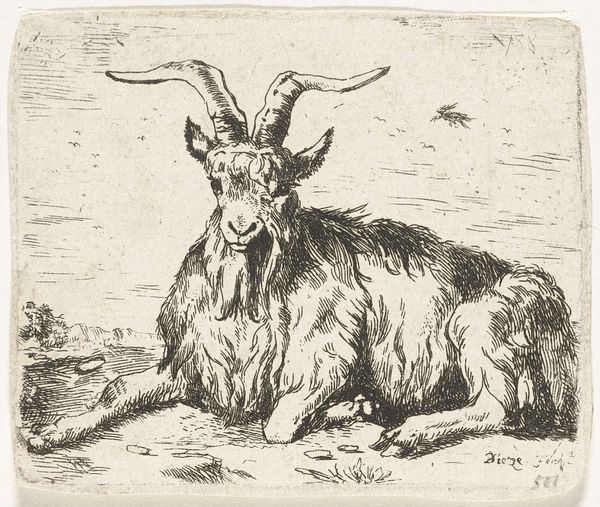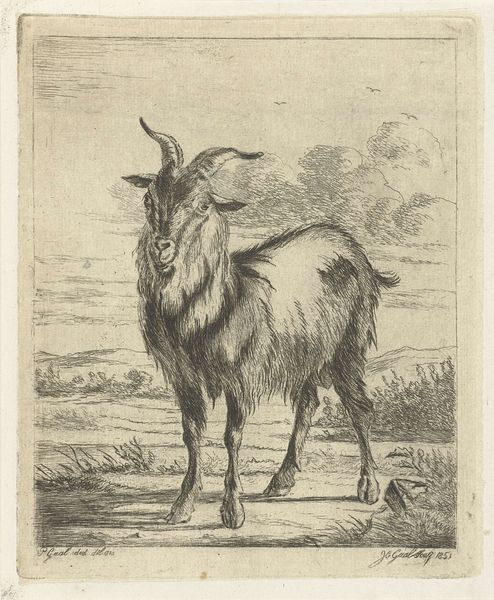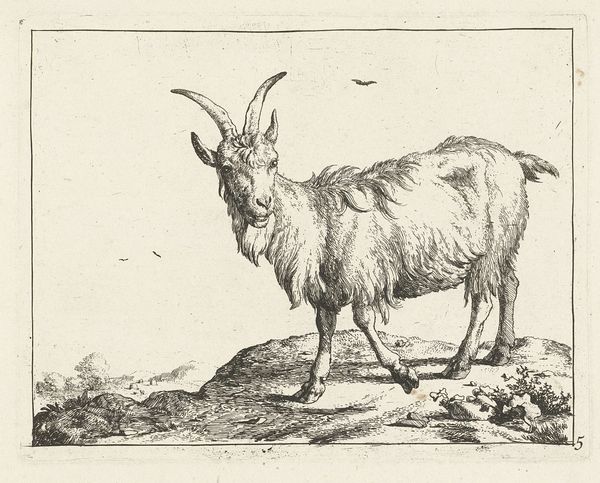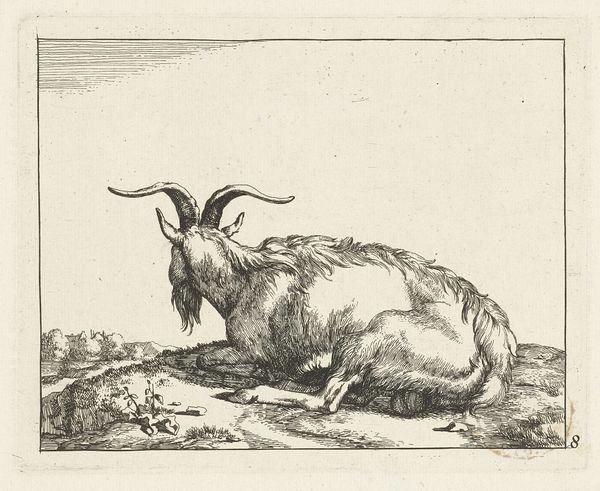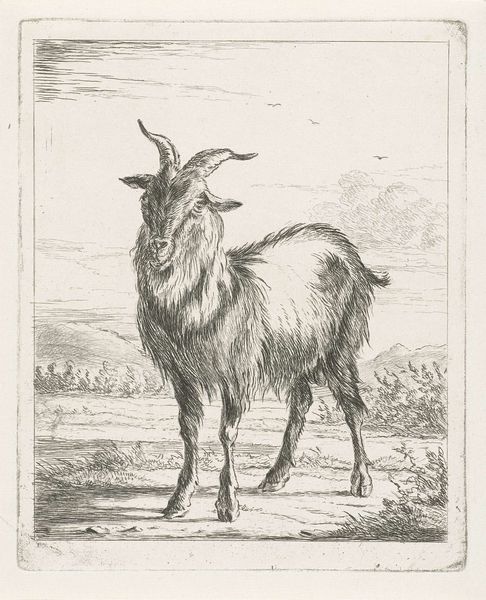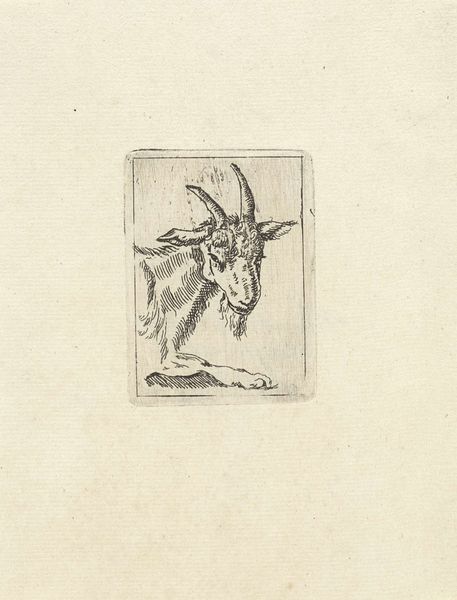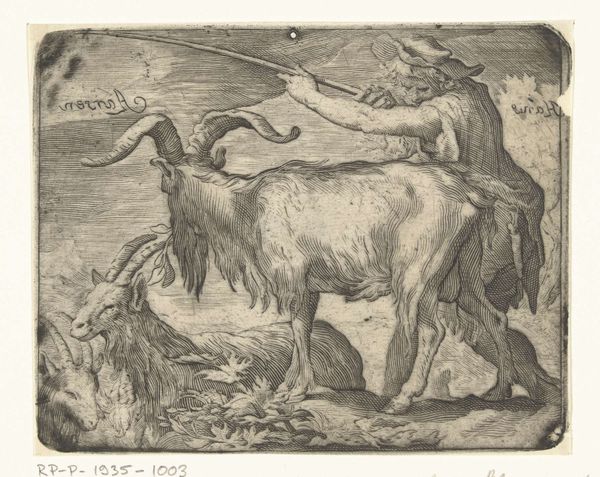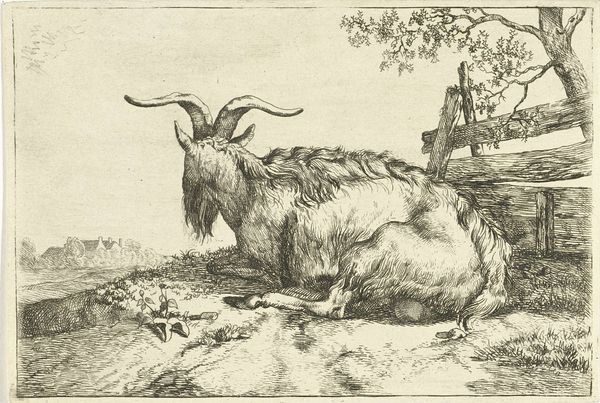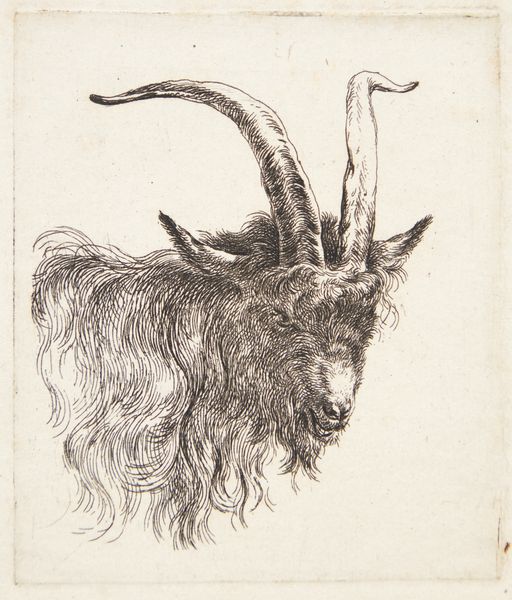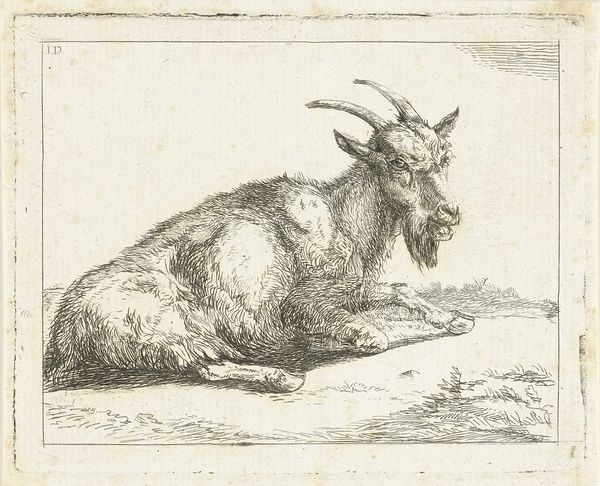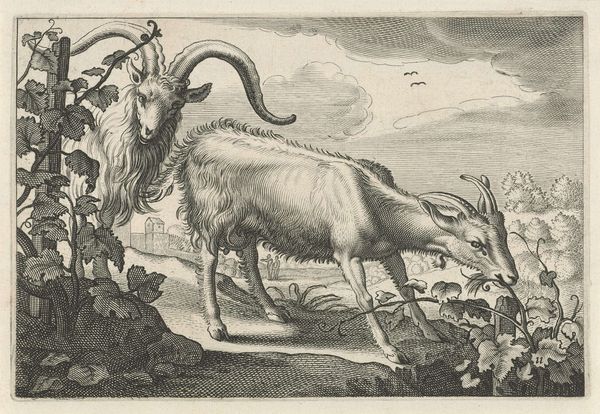
Dimensions: height 135 mm, width 135 mm
Copyright: Rijks Museum: Open Domain
Barend Hendrik Thier created this etching of ‘Kop van een bok’ or ‘Head of a goat’ in 1780. Here, the artist depicts the animal, face forward, leaning over a wooden fence. During the 18th century, the Dutch Republic was undergoing significant social and economic changes. The art of this period often reflected a growing interest in naturalism. Thier's choice to portray a goat is interesting. Goats, often associated with rustic life, may symbolize an idealized view of rural existence. Looking at the goat's eyes, there is an almost human-like quality. This kind of anthropomorphism was not uncommon, as artists sought to explore the relationship between humans and the natural world. As you observe the goat, consider how societal values shape our perception of animals and nature. This etching serves not only as a portrait of an animal, but also as a reflection of the cultural values of the time.
Comments
No comments
Be the first to comment and join the conversation on the ultimate creative platform.
